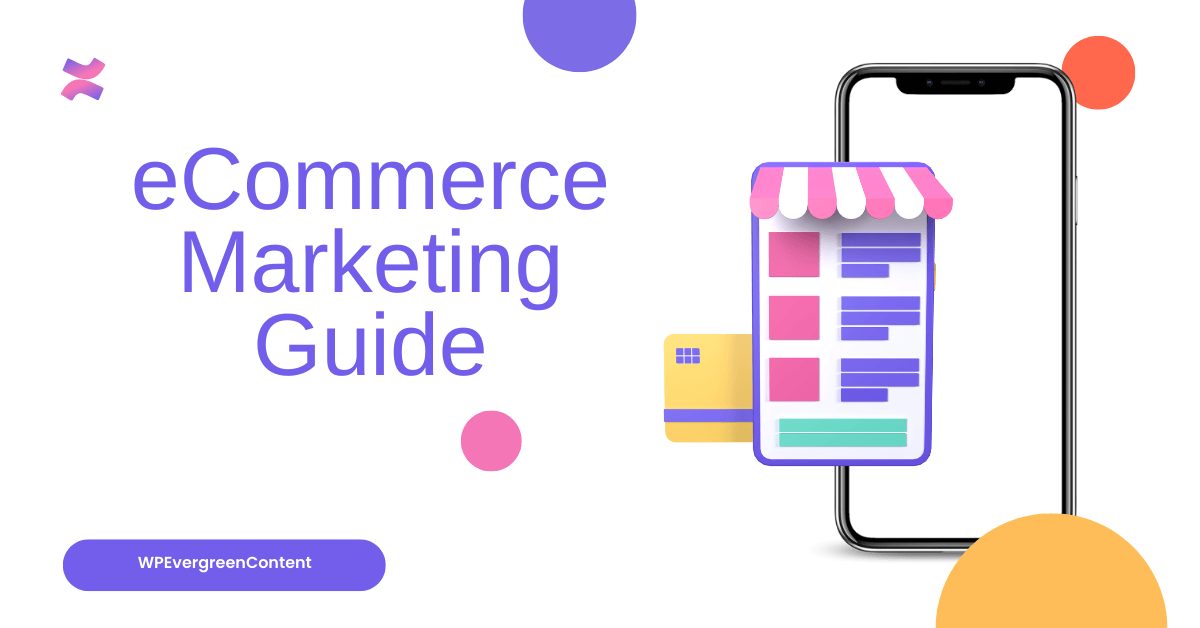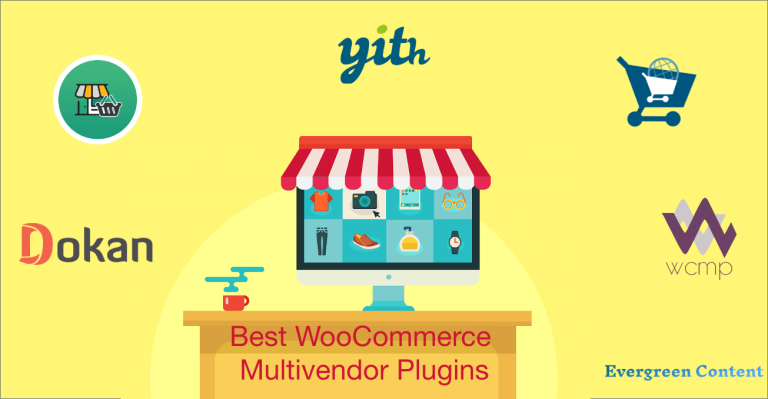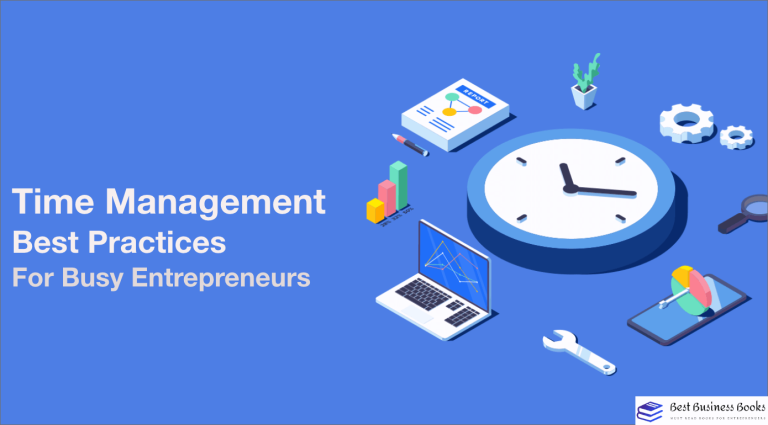How Marketplace Platform Presents Great Opportunities for All Players Involved
Since the availability of high-speed internet, marketplaces are experiencing significant growth. People-based marketplaces like Upwork, and Freelancer, product-based marketplaces like Amazon, and Alibaba, places based marketplaces like Airbnb, and Spacer are a few successful examples of marketplaces. You need a platform to build such marketplaces, keeping the build quality, security, scalability, and agility of the system on the priority list.
Marketplace platforms come into the scene to help visionary eCommerce owners. It offers great opportunities for people who plan to reap the benefits of marketplaces equipped with multi-vendor third-party sellers and direct communication channels with customers. Keep reading to know what is a marketplace platform and how it can benefit buyers, sellers, and marketplace owners through the marketplace platform ecosystem.
What Is a Marketplace Platform?
A marketplace platform is an online marketplace where an operator hosts and secures transactions of products and services between its customers, dealers, and resellers. Simply put, a marketplace platform refers to an interface that provides a common platform for both buyers and sellers.
You can capture numerous aftermarket opportunities with the platform model as the popularity of marketplace platforms is increasing rapidly. People gather at one place to get everything they want in a one-stop shop. They want to buy without having to travel around.
And of course, if you were a seller, a smaller seller, you got a huge opportunity to meet customers you never could before. And your customers were happy because they could get everything done in one place. And the operator was happy because he was sitting there taking a percentage of everything that was going on during that day.
This mechanism keeps the marketplace alive, making the marketplace model a suitable one for buyers, sellers, and operators.
How a Marketplace Works with an Existing Ecommerce
Marketplace platforms are like a back-office system, requiring an eCommerce platform in the front. Every marketplace platform needs a front-facing system that you probably already have. What operators do is communicate with that system. Through third-party sellers, they upload products, prices, and stocks that can be sold through the eCommerce system.
And if there is an order placed, the host system processes that accordingly. For example, it could be six products. Two of them you actually sell yourself through your eCommerce system and the four other products are sold by two different distributors.
Through a marketplace platform, the operators split these orders and send them down to the order system. They get it, they acknowledge, they give a delivery time, add shipping cost (if any), and eventually, it’s their responsibility to ship it to the end customer.
The same thing goes for customer service. You perhaps have a problem with the product delivery, or quality or something, but the host still puts it in one place. It goes down to the right company, they’re responsible for handling the complaints. As an operator, you can always see the traffic. So, if you have a third-party seller that doesn’t live up to your expectations, you can automatically turn them off. Or you can stretch your help to sort out their problems.
The Key Players Involved in a Marketplace Platform
A marketplace platform mainly has three components as follows.
1. Host Operators:
An operator hosts transactions and manages partners. The operator could also be one of the sellers in the marketplace. A marketplace gives operators the ability to provide a new experience to their customers and get a new revenue source as they receive a sales commission for each sale made through the platform. And they get better usage of their digital investment. They can attract more qualified buyers and better monetize their digital platform.
2. Third-party Sellers
A third-party seller, dealer, or reseller holds inventory and completes order fulfillment. All these sellers get access to new markets or customers without the complexity and cost of setting up and running their own eCommerce store.
3. Buyers
Professional buyers or end customers buy from the marketplace. They get a broader selection of products at competitive prices. This helps them get everything they need at their fingertips with Potential savings on shipping.
The Opportunities Marketplace Offers for Its Stakeholders
According to Deloitte Insights, Gartner, and Forrester, 17% of all business-to-business transactions will be through marketplaces by 2023. Covid-19 will accelerate this prediction.
162% is the average ROI within 3 years for B2B marketplaces.
50% of B2B companies have or intend to have a marketplace by the end of 2020 to remain competitive.
⅓ of all US businesses now flow through commerce platforms enabled by the marketplaces.
A marketplace platform offers more with an ecosystem of partners, builds new relationships with your customers, and redefines your position in the value chain. Read on the following section to learn more about the opportunities marketplaces offer for the stakeholders.
1. For Buyers
One-stop-shop: Have a wide variety of products and services in one place from reliable suppliers which enables more efficiency, transparency, cost savings, and more.
Omnichannel experience: Offer a new digital channel for buyers to place and manage orders from any device of their choice, anytime and anywhere.
Automation: Optimize order management processes billing and account reconciliation.
2. For Operators:
Data & insights: Leverage the marketplace as a lab to gather insights into the trends and buyers’ behavior to launch new services and products.
New revenue streams: Develop a new revenue channel through third-party and distributors sales commissions or value-added services.
Increased site traffic: A larger product and service catalog, as well as extended third-party suppliers and distributors, will create a positive network effect, and increase traffic and conversion.
3. For Third-party Sellers
Data & insights: Increase knowledge of buyers’ demands and behaviors to optimize the offerings and services.
Growth and expansion: Support smaller third parties to scale geographically and expand their offerings to extend markets and segments.
Operational efficiency: Improve efficiency through integrated and streamlined catalog management, order and billing processes, and technology.
Example: Toyota Material Handling
Toyota Material Handling shifted to a marketplace platform in 2019, leaving its traditional eCommerce store behind. Before converting to a marketplace, My Toyota Store used to sell service parts through their online dealer locator option. But, now they sell directly to the customers avoiding channel conflicts as much as possible.
Toyota Material Handling (TMH) has an extensive dealer network. This marketplace enables them to manage online orders, customer services, and messages. Customers can access the company’s widespread network of dealers and industry experts through the marketplace. It also expresses a sense of authenticity for the motor parts since all transactions are made through the official eCommerce store.
Moving to an online marketplace had been proven as an effective strategy that worked well for TMH. Online parts sales have grown 220% year over year at the company. The Gross merchandise value (GMV) is increasing 30% month-over-month. 70% of marketplace orders are placed by new customers who have not made a purchase in the last five years.
Thus, North America’s number-one forklift brand brought its dealer network online through a marketplace platform and created a successful eCommerce channel for original equipment manufacturer (OEM) parts.
Why Buyers May Want to Buy Directly from Manufacturer Marketplace?
43% of buyers want to buy a product directly from manufacturers rather than buying from a distributor that sells it. And 20% of B2B buyers are willing to pay slightly more to buy directly from the brand that manufactures the product. Because:
Manufacturers are the most reliable and the most knowledgeable about how the products should work, how you should maintain them, and how you should repair them. So buyers really want to work with manufacturers more than they can today.
Besides, direct marketplaces help manufacturers in reaping the benefits of selling directly to end customers. B2B businesses have always had to struggle with channel conflict. Direct online marketplaces mitigate channel conflict by reducing friction for customers and creating a bigger pie for everyone. Let’s explore how selling directly can add value to a direct customer relationship. It can:
- Convert visitors to buyers
- Manage customer experience through full purchasing lifecycle
- Communicate product information to drive purchase decisions
- Track effectiveness of digital marketing campaigns
- Capture customer information for retention
How a Marketplace Platform Offers Extended Services for Users
Marketplace platforms deliver a unified experience, support all users, and facilitate all aspects of the online shopping journey. They sell the full experience, going beyond just selling products.
Seamless omnichannel, new channels for partners, and actionable insights are a few things marketplace platforms offer for their users. Here’s a list of extended services a quality marketplace platform can offer for operators and sellers.
Features for operators:
- Channel partner management
- Product management
- Globally functional modules
- Quality control system
- Order management system
- Commission management
- Seller management system
Features for sellers:
- Catalog integration
- Promotion management
- Service module
- Customer service
- Messaging module
- Email management
How To Win In The Platform Economy
Why is the platform important? Recent research conducted by McKinsey suggested that 30% of global economic activity will be mediated through marketplace platforms in the next 10 years. The monetary value involved in the marketplace ecosystem will amount to $60 trillion.
The graph in the following figure shows how marketplaces have outperformed other traditional companies. The growth of the red line speaks of the success of marketplace platforms as recorded here from 2016 to 2019.
Why are traditional companies lagging behind? Another research shows that 90% of executives think that their current business models are not economically viable. 85% of their digital investments result in zero or negative economic profit. And more than 2% of corporations don’t have an effective platform strategy.
The adoption of digital marketplace business models can help you get a positive economic profit fighting through the challenges of 2022 and beyond.
Platform Business Model: a New Paradigm
A marketplace can offer a wide range of products and services for buyers. The suppliers and producers can provide physical products, ideas, data, skills, money, property, advertising, content, apps, and more for the consumers. And individuals, big, small, and medium organizations are the consumers here. This model is good for the economy for the following reasons:
- Asset light: The user doesn’t need to own the products or services he’s doing business with. This enables them to earn money without being burdened by assets and liabilities. For example, Uber is lending cars and earning money without buying any car. Airbnb is renting rooms that they don’t own. The marketplace platform made it possible to run such businesses.
- Near zero marginal costs: Every time a new customer comes on board to get services, the marketplace owner won’t need to spend extra money to serve him. He/she already has a platform ready at the customer’s disposal. The marginal cost is almost zero here when you’re dealing with a platform business model.
- Network effects: This is one of the most exciting advantages of a marketplace platform. The more people get involved with your business, the more you can reap the benefits of network effects. If Airbnb has more tenants, more home/hotel owners will list their properties on the marketplace. Similarly, more rooms will attract more lodgers. Thus, network effects contribute to the growth of a marketplace.
Rethink Your Business Model with a Digital Marketplace Platform
Creating an eCommerce store that connects only your consumers and your offerings isn’t enough in this digital and hyperconnected world of the internet. You need to upscale your eCommerce game by incorporating the marketplace platform business model. Have a look at the following picture.
You need to attract third parties who will provide complimentary products or services, or developers who will come up with innovations you could never think of. Attract them to your platform to serve your customers better.
Thus, you can add more value to your customers without having to do all the work yourself. You will be actually leveraging other people’s inventions. Why would other parties collaborate with your marketplace? If you have a considerable customer base, can provide the right incentives, maintain transparency, and create a functional system, they will surely join you.
“When we plant a seed it tends to take 5-7 years to have a meaningful impact on the economics of the company.”
- Jeff Bezos
If you have the affordability to give your business a couple of years to boom and reach your expected level, you can try an all-inclusive platform business model we discussed above.
As a beginner, you can follow the following steps:
- Create your own platform
- Leverage third-party platforms
- Create enablers for own and third-party platforms (for example PayPal as a payment enabler)
Reimagine B2B eCommerce in the Age of Marketplace Platform
“Over the last 20 years, 3rd party sales have grown from 3% to 58%.” Jeff Bezos said it in the 2019 Annual Shareholder Letter.
This growth rate shows how powerful the third-party marketplace platform is, and tells about the possibility of achieving your business goals with the right strategies.
According to a study, the manufacturers are facing multiple challenges when selling their products through channel partners. 76% of them don’t have a direct customer relationship with consumers. 73% of them don’t have end-customer data to further their chances of selling or retaining customers. 46% of them can’t improve conversions and 38% of them have low conversion rates due to the ‘dealer locator’ experiences.
Manufacturers came up with a few selling strategies to encounter these pain points and overcome them. According to research, here is the list of strategies for selling to direct-to-business buyers.
- Launch an online marketplace and invite partners as sellers (50%)
- Sell directly on other marketplaces (42%)
- Sell directly even with the risk of conflict (40%)
- Launch an aftermarket direct-to-consumer site that doesn’t compete (29%)
What’s more interesting is that 66% of manufacturers, wholesalers, and distributors are planning to build a larger ecosystem equipped with third-party partners and products. Now that you know the overall scenario of the marketplace economy, choose what role you will play.
- Use platforms: You can sell on platforms and take advantage of the existing marketplace platforms.
- Create platforms: You can build your own platform and host third-party sellers.
- Support platforms: You can support other platforms and enable them to do more. For example, you can provide delivery services for eCommerce.
Once you can fix your role in the marketplace platform ecosystem, execute your plans to achieve your business goals. Choose the right platform to build your marketplace since the functionality and security of your stores largely depend on the quality of the platform.






